
Saludos comunidad. Espero estén todos muy bien.
Cómo bien pueden interpretar por el título del post, otra semana santa se ha presentado y ya estoy de regreso después de celebrar la misa de Domingo de Resurrección. Sé que muchos no celebran este tipo de festividades, tal vez por ser de índole religiosa o por falta de tiempo. Pero, una de las cosas que nos trae este tipo de celebración, por lo menos para mí, es el tiempo de reflexión. Así que están más que invitados a reflexionar junto a mí en este post.
Este tiempo para muchos es importante para agradecer por lo que tenemos, por nuestras familias, por nuestra salud, por nuestra felicidad, por amor, la compañía… para pedir por los demás, por un mejor futuro, guía espiritual, reconcilio… o para pagar alguna promesa que se realizó, por ejemplo, después de mucho esfuerzo se pudo concebir un hijo, se recuperó de un grave problema de salud, hizo que el mundo continuara girando otro año más… Cada uno de nosotros tiene sus propósitos en estos eventos. Algunos sólo quieren vacacionar, ir a la playa, visitar a la familia y otros quieren conmemorar la pasión de Cristo, sean cristianos o no, cualquier decisión que tomen son libres de seguirla. Esas decisiones se basarán dependiendo del legado que nuestros antepasados nos hayan sembrado.
En mi familia celebramos este tiempo pascual. Normalmente se realiza en la última semana de marzo, aunque en algunas partes del mundo puede variar un poco la fecha. Y, durante este tiempo, conmemoramos esos momentos de Jesucristo desde su llegada a Jerusalén hasta su muerte y resurrección.
Aunque seguro para muchos sería muy entretenido escribir y leer sobre todo este período con lujo de detalle. Me gustaría centrar este post en un día en particular, el Viernes Santo. Este día realizamos la visita de los 7 templos. Estos 7 templos representan los últimos momentos en cuerpo y alma que vivió Jesucristo.
Antes de empezar el peregrinaje, se me ocurrió fotografiar los templos y sus altares e imaginar (no de manera literal) a cada uno de estos, como si fuera una de estas estaciones en las que se presentó Jesús. Disfruten el post.
Primer templo: En el huerto de Getsemaní
En este huerto Jesús oraba, era un momento muy tenso para él, se dice que sentía tanto estrés que sudó sangre, parecía que se estaba preparando para lo que venía… Sus discípulos debían estar orando, pero estaban dormidos. En la penumbra de la noche, antorchas se ven acercándose hacia dónde estaban acampando, palos y espadas se hicieron presentes junto a sequito que buscaba con deseo a Jesús. De entre ellos, un rostro conocido apareció. El rostro de Judas Iscariote que se aproximaba y besaba a Jesús. Sin duda, una señal de traición para revelar al que llamó alguna vez maestro. Jesús es capturado, pero no sin antes de prevenir que sus discípulos hicieran daño y al mismo tiempo fueran lastimados por sus captores.
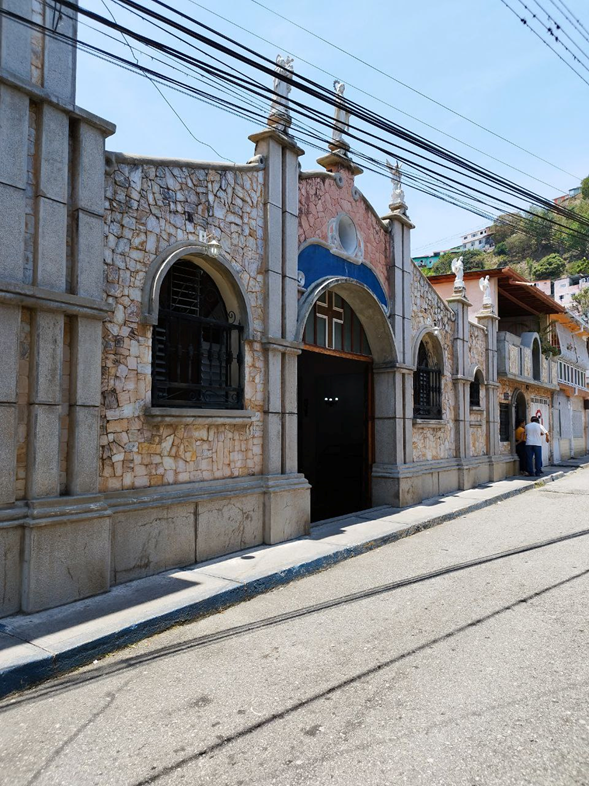
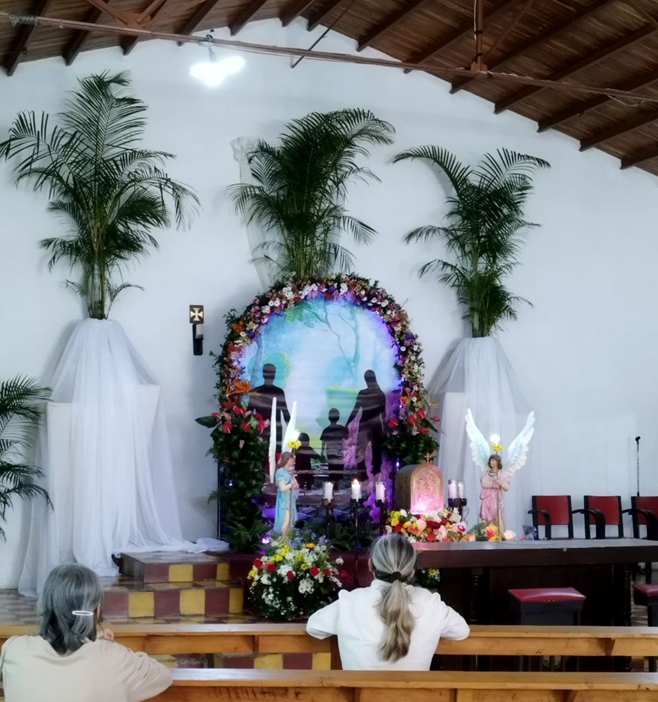
Segundo templo: En casa de Anás
Llevado y tratado como un criminal hasta la casa del sumo sacerdote del Sanedrín Anás. Es interrogado sobre sus prácticas y discursos en el templo. Jesús responde que pregunte a cualquiera que lo ha escuchado sobre sus enseñanzas y ellos le podrían responder. Aquí es abofeteado y prácticamente silenciado.
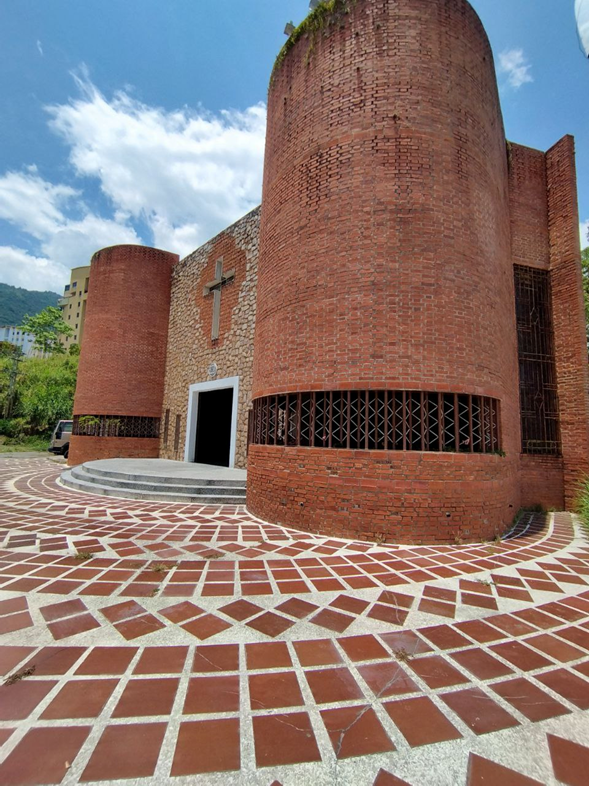
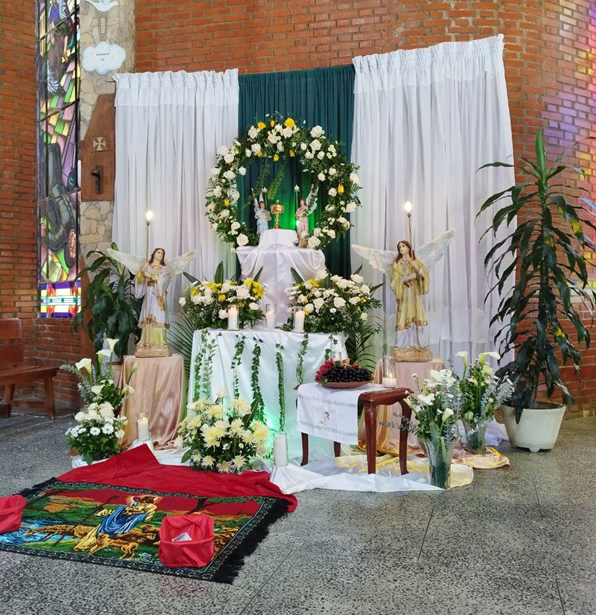
Tercer templo: En casa de Caifás
Anás, decide enviar a Jesús con una autoridad mayor dentro del Sanedrín a su yerno Caifás. Nuevamente es interrogado, con la intención de encontrar con claridad un crimen por el cual acusarlo y de entre dichos y murmullos de los presentes que tergiversan sus enseñanzas, lo acusan de blasfemo y de autoproclamarse hijo de Dios.
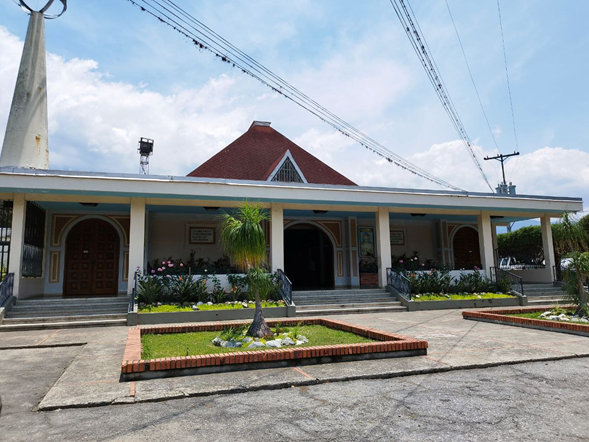
En esta misma estación, un Pedro que acompañaba el paradero de su maestro entró a la residencia de Caifás y se quedó en el patio con otros que estaban presentes y se le acusó en tres ocasiones de ser un miembro de los discípulos de Jesús de Nazaret, de las cuales él niega rotundamente estas acusaciones y sin darse cuenta el segundo canto de un gallo lo hizo recordar las palabras que su maestro le pregonaba durante la última cena: “… tú, hoy, esta misma noche, antes que el gallo cante dos veces, me negarás tres veces”

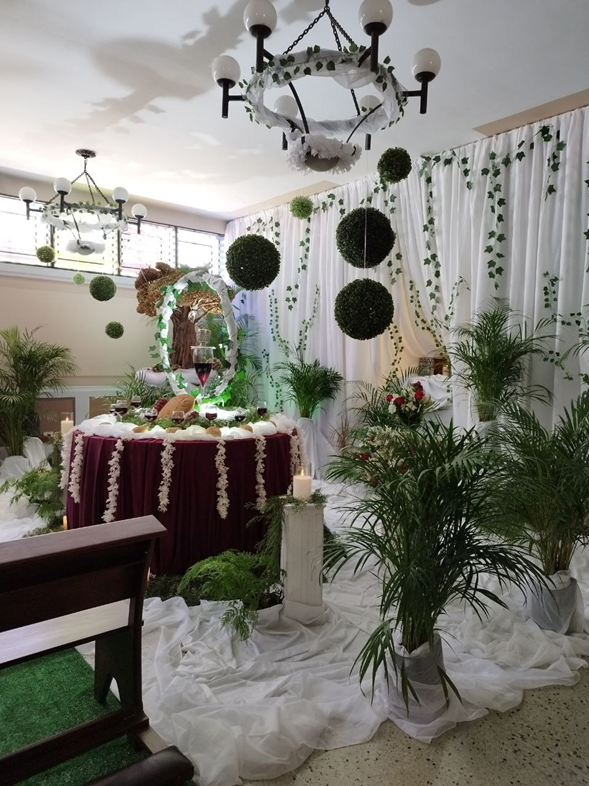
Cuarto templo: Con Pilatos
Caifás ya tenía claro cuál era el delito de Jesús y sentía que por estas penas era merecedor de la muerte. Sin embargo, este sumo sacerdote no tenía la autoridad de llevar a cabo esta sentencia. Así que, lo lleva con Poncio Pilatos, para que este llevara a cabo la condena. Pilatos, lo interrogó, pero no encontró ningún delito merecedor de la muerte. Sabía que la única razón de la presencia de ese hombre en su despacho era por el desagrado que le generaba a los sumos sacerdotes. Pero, al enterarse que Jesús era de Galilea, decidió encomendarlo a otra jurisdicción.
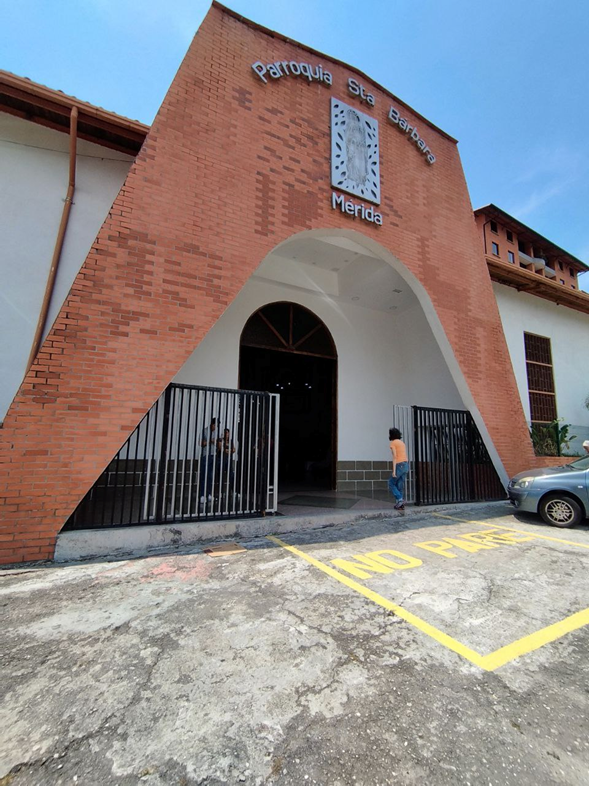
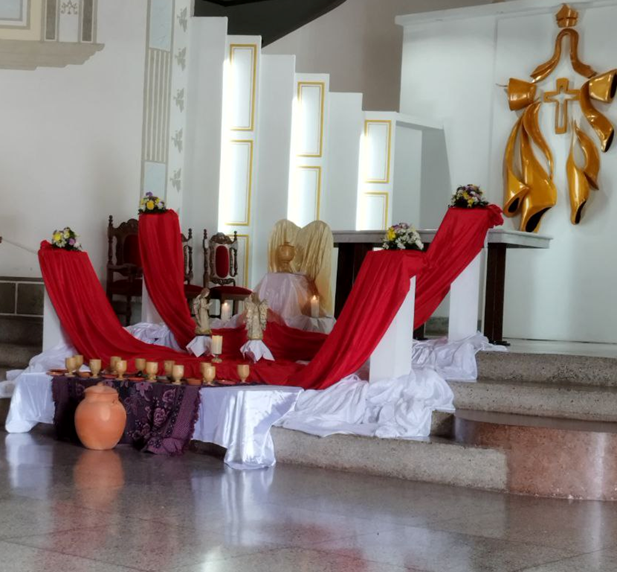
Quinto templo: Con Herodes
A diferencia de Pilatos, Herodes había escuchado sobre los Milagros de Jesús. Así que esperaba poder presenciar algunos trucos. Sin embargo, lo único que consiguió de Jesús fue silencio. Herodes, al final lo despreció, lo ridiculizó, sin embargo, tampoco encontró ningún delito en Jesús, así que lo envió de regreso con Pilatos para que él tomara la decisión de qué hacer con él.
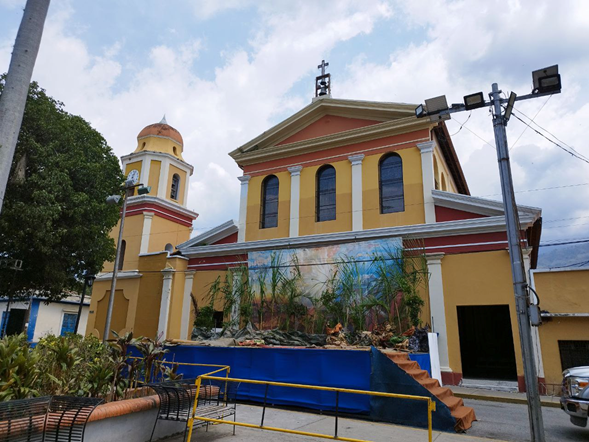
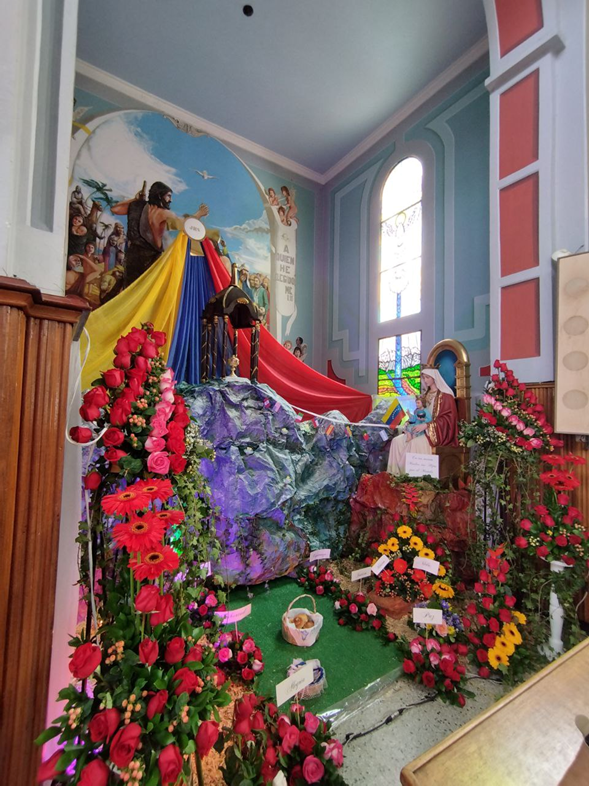
Sexto templo: De vuelta con Pilatos
Pilatos, devuelta Jesús en su palacio, no está decidido de qué hacer con Jesús. Está convencido de que no es un criminal. Pero, hay demasiada presión de parte de los sumos sacerdotes para que condenara a muerte a Jesús. Le dejó la decisión al pueblo. Propuso liberar a un criminal de nombre Barrabás o liberar a Jesús. Pero, el pueblo ya influenciado por los sumos sacerdotes escogió la libertad de Barrabás… Pilatos, le pregunta que debe hacer con Jesús y se empieza a escuchar, ¡crucifícalo! Entre los presentes. Luego, Pilatos delante de todo el pueblo, se lava las manos en señal de que él se desentiende del asunto y es el pueblo el que ha escogido el destino de Jesús. Jesús es condenado a morir crucificado.
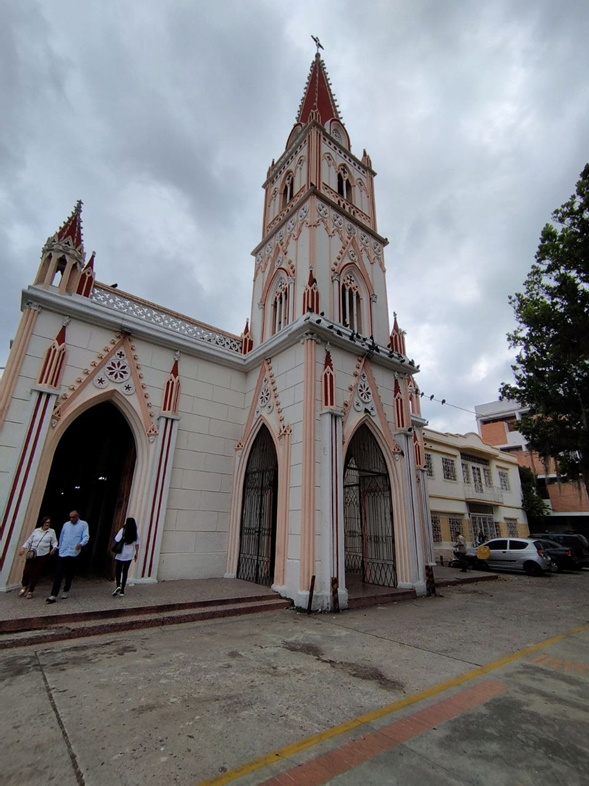
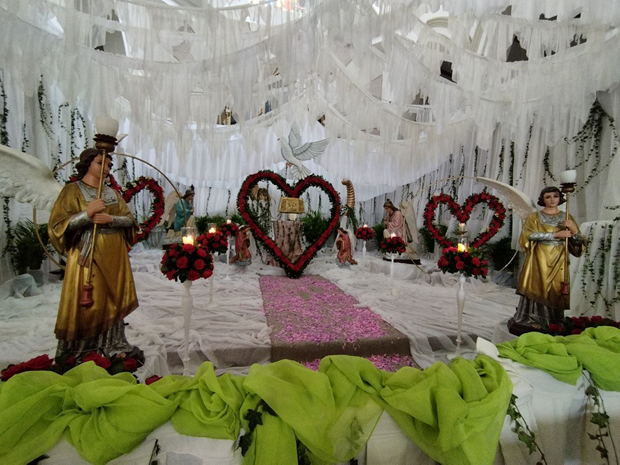
Séptimo templo: Jesús en el sepulcro
Jesús muere en la cruz, no sin antes sufrir más humillaciones, golpes, azotes y desolaciones. En la cruz siente el abandono de Dios y todavía es misericordioso con otro que sufre su mismo destino. Su madre y compañeros lloran su muerte. Su cuerpo es reclamado a Pilatos por uno de sus discípulos, José de Arimatea y enterrado en el sepulcro. Al tercer día Jesús resucitaría y cumpliría así la profecía.
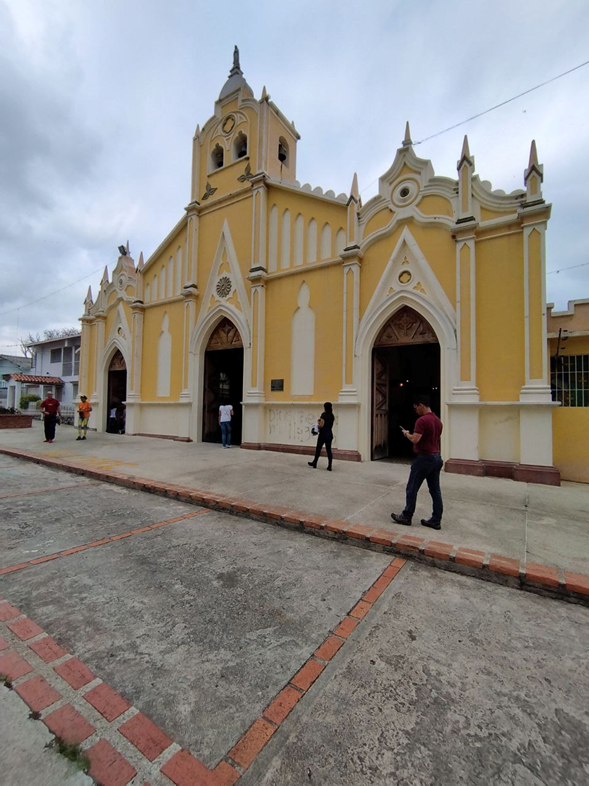

En esta visita a los 7 templos, suelen hacerse representaciones del viacrucis. Una historia un poco más detallada dividida en 14 tramos muy representativos desde que Jesús es condenado a muerte hasta que Jesús es sepultado. Incluso se suele mostrar el arrepentimiento de Judas tras la traición a Jesús representado en su suicidio.
Otra cosa que vale la pena decir es que, tratando de seguir la representación de los eventos de aquella época, en algunas localidades o algunas personas, pueden comenzar el jueves en la noche. Me refiero a que muchas personas pueden comenzar el peregrinaje desde el jueves en la noche y terminarlo el viernes en la tarde.
Si uno se pone a ver con más detalle en casi todas estas estaciones, pareciera que Jesús tiene incontables momentos para librarse de ese fatídico destino, tal vez diciendo las palabras que sus inquisidores querían escuchar, tal vez agradándole a alguno de los líderes romanos en una de sus entrevistas o hasta huir en aquel huerto. Pero, parece que tomar ese camino, sin duda era desviarse del propósito de su llegada a este plano. Pareciera que él conocía mejor su destino que cualquier otro y desviarse de ese destino, nos privaría de la oportunidad de reflexionar, de recapacitar por nuestros actos, incluso les negaría el derecho a estos protagonistas de tocar su corazón y preguntarse si eso que están haciendo es lo correcto. Fueron momentos, dónde nuestra libertad como mencioné más arriba, nos debería permitir hacer lo correcto o no.
Siempre hay cosas que decir y que analizar sobre estas festividades. Pero, siempre se pueden crear oportunidades para traer estos temas y analizar un poco más. Tenía un deseo de compartir mi peregrinación con la comunidad y acompañarla. de la historia que estaba reflexionando en cada visita, creo que es compartir un poco sobre los sentimientos que tenía. Espero les haya gustado este recorrido.
¡Feliz domingo!
ENGLISH VERSION

Greetings community. I hope you are all very well.
As you can well interpret by the title of the post, another holy week has come and I am already back after celebrating Easter Sunday mass. I know that many do not celebrate these types of festivities, perhaps because they are religious or because of lack of time. But, one of the things that this type of celebration brings, at least for me, is time for reflection. So you are more than invited to reflect with me in this post.
This time for many, it is important to give thanks for what we have, for our families, for our health, for our happiness, for love, and company... to ask for others, for a better future, spiritual guidance, reconciliation... or to pay some promise that was made, for example, after much effort you were able to conceive a child, recovered from a serious health problem, made the world continue turning another year... Each of us has our purpose in these events. Some just want to vacation, go to the beach, visit family and others want to commemorate the passion of Christ, whether they are Christians or not, whatever decision they make they are free to follow. Those decisions will be based on the legacy that our ancestors have left us.
In my family, we celebrate this Easter season. It usually takes place in the last week of March, although in some parts of the world, the date may vary a bit. And, during this time, we commemorate those moments of Jesus Christ from his arrival in Jerusalem to his death and resurrection.
Although I'm sure it would be very entertaining for many to write and read about this whole period in great detail. I would like to focus this post on one day in particular, Good Friday. On this day we visited the 7 temples. These 7 temples represent the last moments in body and soul that Jesus Christ lived.
Before starting the pilgrimage, it occurred to me to photograph the temples and their altars and imagine (not literally) each one of them as if it were one of these stations where Jesus appeared. Enjoy the post.
First Temple: In the Garden of Gethsemane
In this garden Jesus was praying, it was a very tense moment for him, it is said that he felt so much stress that he sweated blood, it seemed that he was preparing for what was coming... His disciples must have been praying, but they were asleep. In the twilight of the night, torches were seen approaching where they were camping, sticks and swords were present along with the little group that was eagerly looking for Jesus. From among them, a familiar face appeared. The face of Judas Iscariot approached and kissed Jesus. Undoubtedly, a sign of betrayal to reveal the one he once called master. Jesus is captured, but not before preventing his disciples from harming and at the same time being hurt by their captors.


Second temple: In the house of Annas
Taken and treated as a criminal to the house of the high priest of the Sanhedrin, Annas. He is questioned about his practices and discourses in the temple. Jesus replies to ask anyone who has heard him about his teachings and they would be able to answer him. Here he is slapped and practically silenced.


Third Temple: In the house of Caiaphas
Annas decides to send Jesus with greater authority within the Sanhedrin to his son-in-law Caiaphas. Again he is interrogated, with the intention of clearly finding a crime for which to accuse him, and amidst the sayings and murmurings of those present who misrepresent his teachings, they accuse him of blasphemy and of self-proclaiming himself to be the son of God.

At this same station, a Peter who was accompanying the whereabouts of his master entered the residence of Caiaphas and stood in the courtyard with others who were present and was accused on three occasions of being a member of the disciples of Jesus of Nazareth, of which he flatly denies these accusations and without realizing it the second crowing of a rooster made him remember the words his master proclaimed to him during the last supper: "... you, today, this very night, before the rooster crows twice, will deny me three times."


Fourth temple: With Pilate
Caiaphas was already clear about Jesus' crime and felt that for these penalties he was deserving of death. However, this high priest did not have the authority to carry out this sentence. So, he took him to Pontius Pilate, so that he could carry out the sentence. Pilate interrogated Him but found no crime worthy of death. He knew that the only reason for the man's presence in his office was because of his displeasure with the chief priests. But when he learned that Jesus was from Galilee, he decided to entrust him to another jurisdiction.


Fifth Temple: With Herod
Unlike Pilate, Herod had heard about the Miracles of Jesus. So he was hoping to witness some tricks. However, all he got from Jesus was silence. Herod, in the end, despised him and ridiculed him, however, he found no crime in Jesus either, so he sent him back to Pilate for him to decide what to do with him.


Sixth Temple: Back to Pilate
Pilate, back in his palace, is undecided about what to do with Jesus. He is convinced that he is not a criminal. But, there is too much pressure from the chief priests to condemn Jesus to death. He left the decision to the people. He proposed to release a criminal named Barabbas or release Jesus. But, the people, already influenced by the chief priests, chose to release Barabbas... Pilate asked what he should do with Jesus and they began to hear, "Crucify him! among those present. Then, Pilate, in front of all the people, washes his hands as a sign that he has given up the matter and it is the people who have chosen the fate of Jesus. Jesus is condemned to die by crucifixion.


Seventh temple: Jesus in the tomb
Jesus dies on the cross, but not before suffering more humiliation, beatings, scourging, and desolation. On the cross, he feels God's abandonment and is still merciful to another who suffers the same fate. His mother and companions mourn his death. His body is claimed to Pilate by one of his disciples, Joseph of Arimathea, and buried in the tomb. On the third day, Jesus would rise again and thus fulfill the prophecy.


In this visit to the 7 temples, there are usually representations of the Stations of the Cross. A slightly more detailed story divided into 14 very representative sections from the time Jesus is condemned to death until Jesus is buried. Even the repentance of Judas after the betrayal of Jesus is usually shown represented in his suicide.
Another thing worth saying is that, trying to follow the representation of the events of that time, in some localities or some people, they may start on Thursday night. I mean many people may start the pilgrimage from Thursday night and finish it on Friday afternoon.
If one looks more closely at almost all of these stations, it seems that Jesus has countless moments to free himself from that fateful destiny, perhaps by saying the words his inquisitors wanted to hear, perhaps by pleasing one of the Roman leaders in one of his interviews, or even by fleeing into that garden. But, it seems that to take that path, no doubt, was to deviate from the purpose of his arrival on this plane. It would seem that he knew his destiny better than anyone else and to deviate from that destiny would deprive us of the opportunity to reflect, to reconsider our actions, even denying the right of these protagonists to touch their hearts and ask themselves if what they are doing is the right thing to do. These were moments, where our freedom, as I mentioned above, should allow us to do the right thing or not.
There are always things to say and analyze about these festivities. But, you can always create opportunities to bring up these issues and analyze them a little more. I had a desire to share my pilgrimage with the community and accompany it. of the story I was reflecting on each visit, I think it is sharing a little bit about the feelings I had. I hope you liked this tour.
Happy Sunday!
Todas las fotografías son de mi autoría, tomadas con un celular POCO X4 Pro
All photographs are my own, taken with a POCO X4 Pro cell phone.

Congratulations @flquin! You have completed the following achievement on the Hive blockchain And have been rewarded with New badge(s)
Your next target is to reach 300 posts.
Your next target is to reach 4000 comments.
Your next target is to reach 3750 replies.
You can view your badges on your board and compare yourself to others in the Ranking
If you no longer want to receive notifications, reply to this comment with the word
STOPCheck out our last posts:
Gracias a ustedes por el apoyo!
Es un placer compartir sobre mi patria.